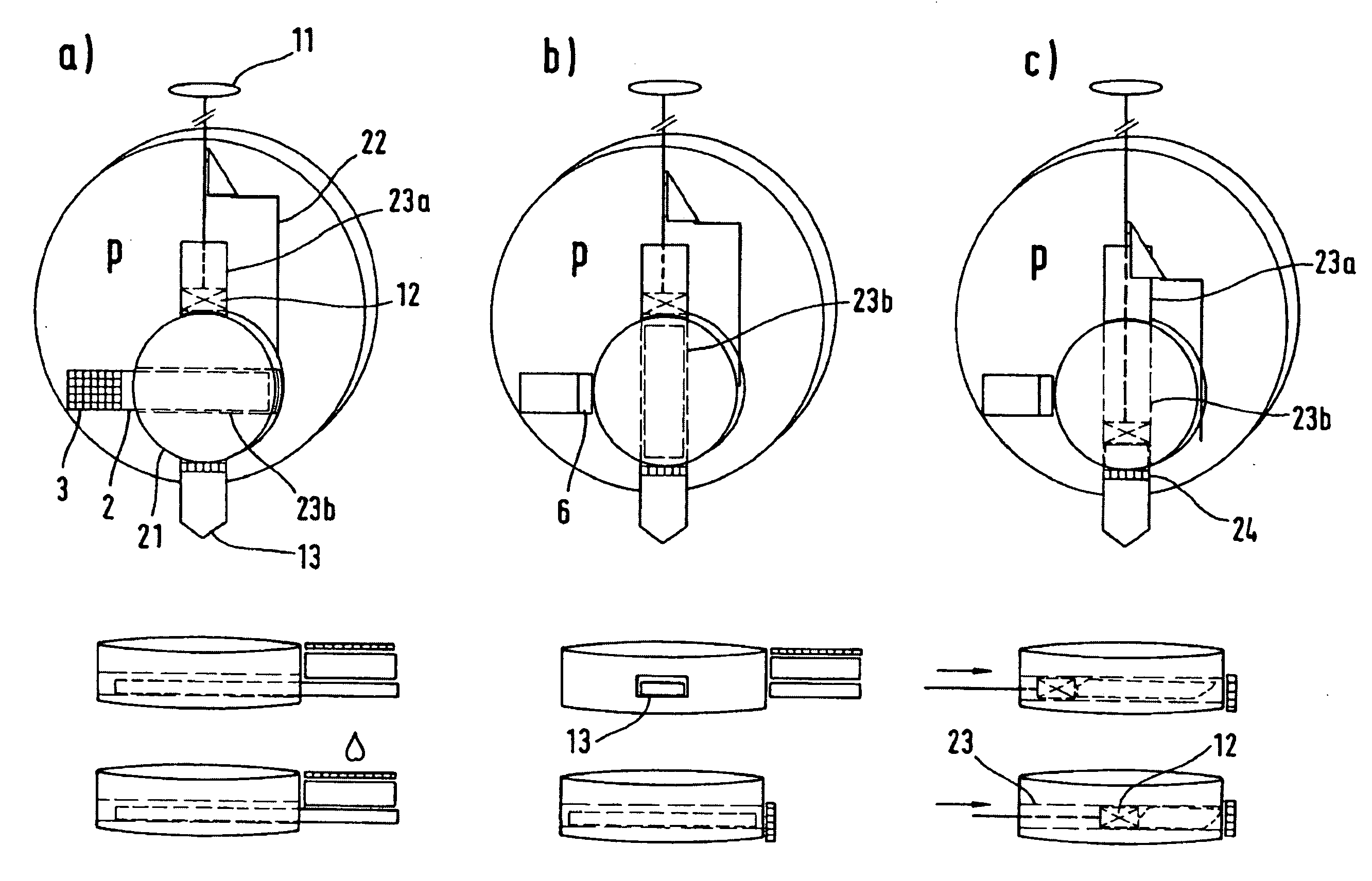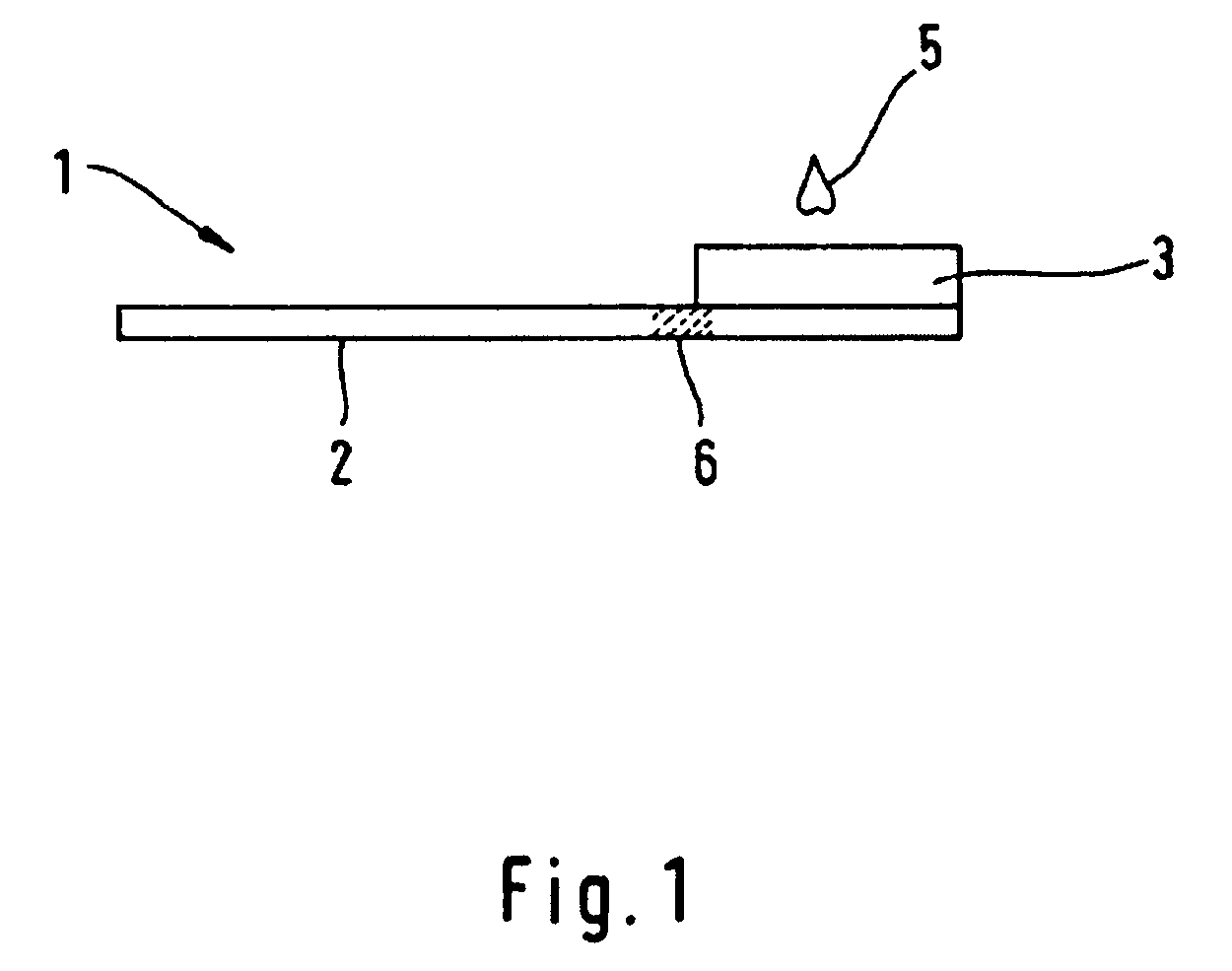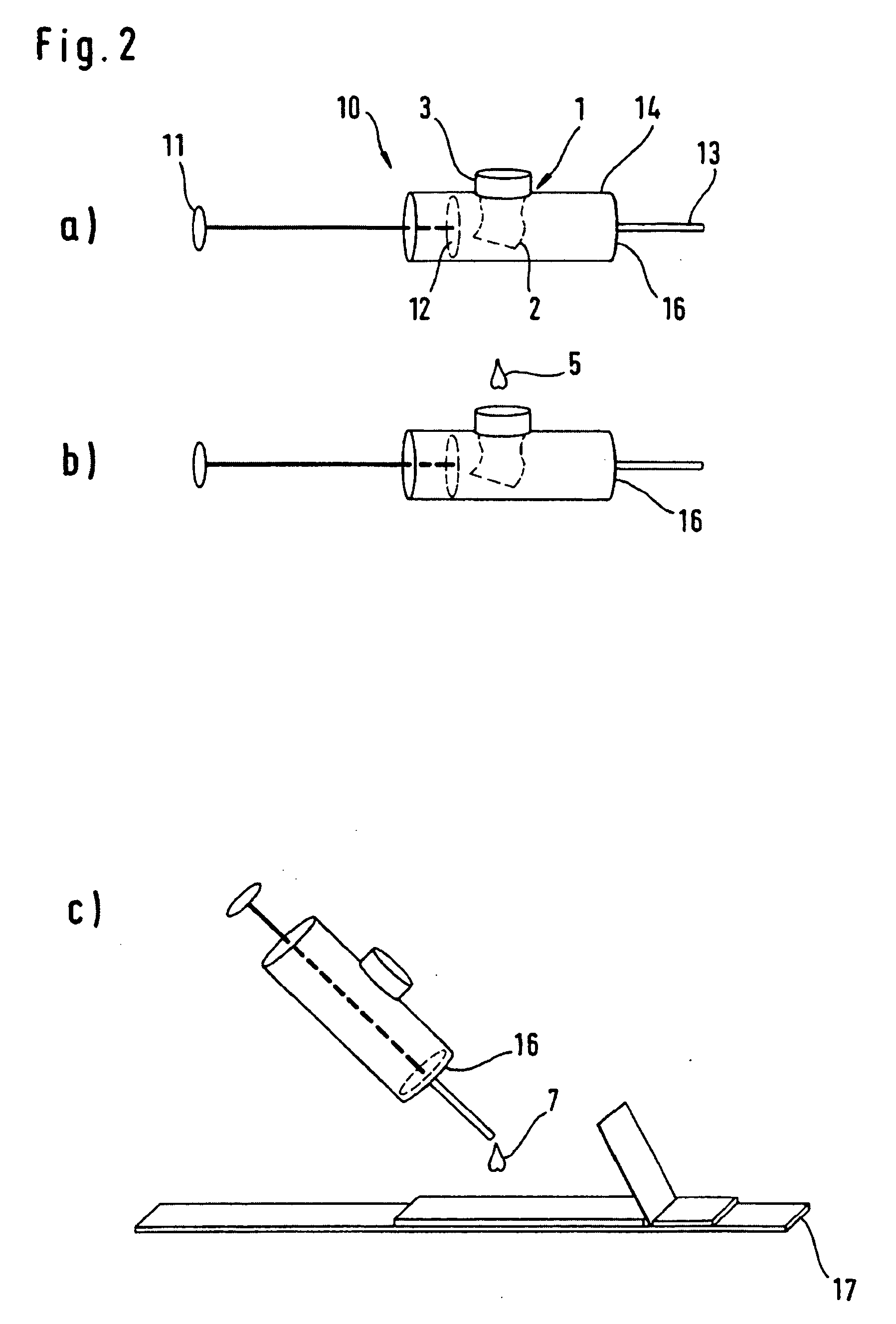Device and Method for Separating and Discharging Plasma
a plasma and discharging technology, applied in the field of plasma collection, can solve the problems of complex complexing agents, inability to use plasma separation layers integrated into test elements, and laborious methods, and achieve the effects of convenient handling, simple and rapid plasma separation, and economic production
- Summary
- Abstract
- Description
- Claims
- Application Information
AI Technical Summary
Benefits of technology
Problems solved by technology
Method used
Image
Examples
Embodiment Construction
[0043]Referring initially to FIG. 1, an example of the construction of a separation element (1) in accordance with one embodiment of the present invention, is illustrated. The separation element (1) comprises a transport fleece (2) which, for example, consists of glass fibers. A separation fleece (3) which is composed of a filter medium is mounted on the transport fleece (2). The main difference between the transport and the separation fleece is their different densities. In the prior art a density of 77 g / cm2 is, for example, given for a separation fleece and 53 g / cm2 for a transport fleece (Whatman fleece). The smaller thickness of the transport fleece allows a rapid transport of the sample along the fleece whereas the larger thickness of the separation fleece ensures a reliable separation of plasma from blood. When a blood drop (5) is applied, the blood enters the separation fleece (3). The filter medium in the separation fleece separates the blood components from the plasma and ...
PUM
| Property | Measurement | Unit |
|---|---|---|
| volume | aaaaa | aaaaa |
| volume | aaaaa | aaaaa |
| volume | aaaaa | aaaaa |
Abstract
Description
Claims
Application Information
 Login to View More
Login to View More - R&D
- Intellectual Property
- Life Sciences
- Materials
- Tech Scout
- Unparalleled Data Quality
- Higher Quality Content
- 60% Fewer Hallucinations
Browse by: Latest US Patents, China's latest patents, Technical Efficacy Thesaurus, Application Domain, Technology Topic, Popular Technical Reports.
© 2025 PatSnap. All rights reserved.Legal|Privacy policy|Modern Slavery Act Transparency Statement|Sitemap|About US| Contact US: help@patsnap.com



